Old, and Some New, Photographs of Woodbridge & Melton
This photograph shows the entrance to Theatre Street in 2010.
There used to be two cottages on the left of the entrance but they were demolished in the 1960s to make way for public toilets. The area in front of the toilets was left open and it became used as an unofficial parking space, so in 2006, the area was blocked off by a low fence and planted up.
In about 2015 it planning permission was was granted built a small house with an integral garage to the right of this photograph. In this photograph the house is partly obscured by a tree.
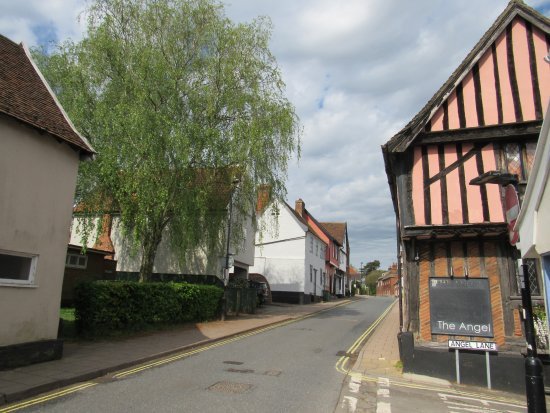
phot2105a
The four houses in the centre of this photograph are all Grade II listed. The two houses on the left were built in the eighteenth century. The next house was built in the sixteenth century and the end house was built in either the eighteenth or nineteenth century.
In 1577 the neglected state of education in the town caused concern to Thomas Arnott, a Lowestoft merchant who had been born in Woodbridge. He thus bequeathed tenements to provide money to support a Free Grammar School for boys “knowing that the town was poor and populous and for the love he bore it”. His school was established in the white building in the centre of this photograph.
Legal action over the terms of Arnott's bequest reduced the money available to the school which eventually had to close. Vincent Redstone gives the date of closure as 1607 but others suggest that it was 1647. After the school closed the building was bought by William Bearman, who in 1668 bequeathed it 'towards the relief of the poor of Woodbridge'. In 1672 the building was converted to a Workhouse because the parish’s combined House of Correction and Workhouse on New Street was overwhelmed by Dutch prisoners taken during the battle of Sole Bay.
The parish’s new Workhouse was in use until the Woodbridge Poor Law Union was created in 1835. The Union was made up of 48 parishes around Woodridge and the Union Workhouse was at Nacton. The Governors of the Union retained the building formerly used as the parish workhouse and, for a time, may have used it for their meetings. The Charity Commission eventually instructed them to sell the building in 1862.
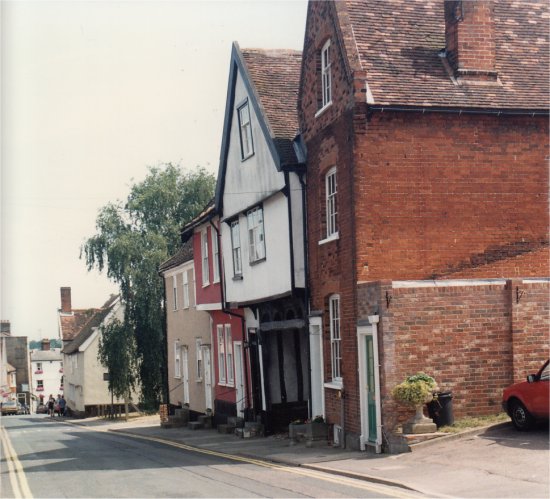
Phot2111
By 1840 there were nine other buildings between the cluster of four buildings mentioned above and entrance to Queen's Head Lane. All but one of these buildings would be demolished during the 1960s to make way for modern developments.
The photograph on the right is the only one to show some of the buildings which were eventually demolished. These buildings are all marked by a number within a red dot.
Number 1 is a terrace of three houses. Number 2 is Edgar Goldsmith's "smith and farrier". Number 3 is a wide entrance to a row of cottages which was a right angles to Theatre Street. Beyond this entrance there was a short terrace of cottages.
All of these buildings were demolished in the 1960s to create a Council Car Park a Fire Station. Changes would latter be made to the Fire Station in order to make room for a Police Station on the site.
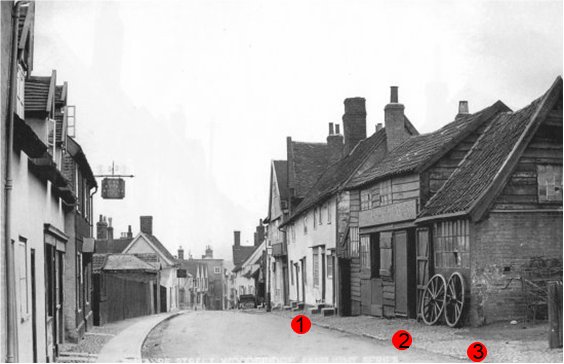
Phot971
Between 1818-19 a tower windmill had been built in an extensive area between the houses on Seckford Street, Queens Head Lane and Theatre Street. Access to the mill was via entrance on Queens Head Lane.
The mill ceased operation sometime before 1937. By then Stewart Tricker, a coal merchant, was using the site.
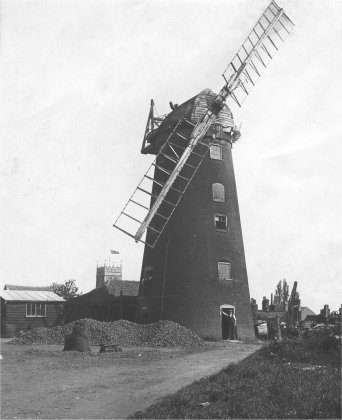
This photograph show the Fire Station and the Police Station. The redbrick buildings in the background of the photograph are the Woodbridge Red Cross Centre and Mussidan Place, a complex of retirement homes. They were both completed in 1973.
To make way for them, all but one of the pre 1840s buildings on the left side of Theatre Street had to be demolished. By then the sails had been removed from the mill but the tower remained and was eventually included in Mussidan Place.
Each Branch of the Red Cross was a separate registered charity until 1 Jan 1998 when the British Red Cross was made a single charity. At the same time the organizational structure was changed to provide a better match to that of the NHS and government organizations. The Suffolk Branch, along with all the other county Branches were closed, but the 1200 Red Cross Centres remained.
These changes impacted on Centres in two ways. Firstly all of the funds collected locally - donations and payments for services – were henceforth put into a national pot and the individual Centres were given an allowance depending of their size and functions. Secondly the Red Cross volunteers were no longer coordinated by other volunteers. Instead they were managed by a team of Red Cross employees in each Operational Area. Despite promises that the Woodbridge Red Cross Centre would remain open the building is now an antiques shop.
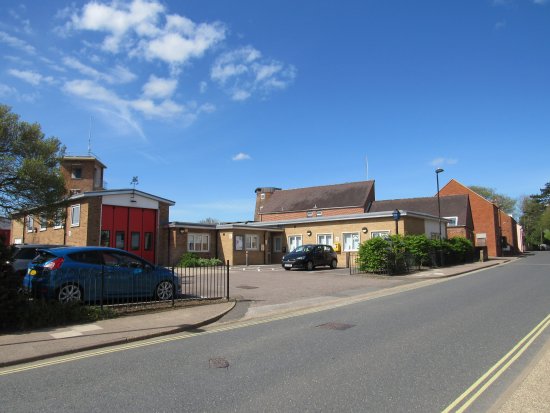
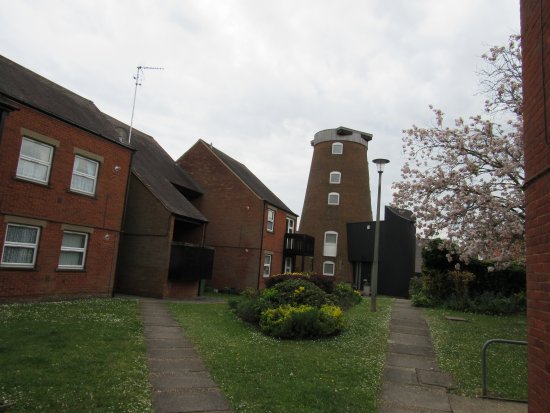
Phot2105a Next series of photographs Previous series of photographs